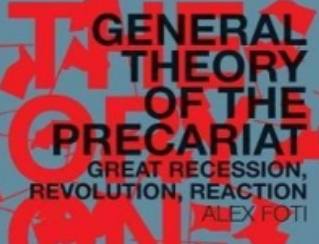 Book review by David Shirreff
Book review by David Shirreff
A good title does not guarantee a good book, and this one is good only in parts. Everyone would love to know where and when the next crisis will come, assuming that there will be one sooner or later. Colin Hay and Tom Hunt, both of the Sheffield Political Economy Research Institute (SPERI) at Sheffield University, have pulled together a series of short essays, about half of them written by SPERI colleagues, which explore some likely candidates.
A repeat of the 2008 global financial crisis is unlikely, because the private-sector weaknesses of that time have been absorbed by an explosion of government-supported debt. So the vulnerable area has shifted into the dangers of stagflation and the resilience of central banks, which stood between us and chaos before and now may have run out of ammunition. That is the starting-point of the exercise, as presented by the editors.
The threat of a predominantly financial crisis has been replaced by one involving politics. That was evident in 2016 when economic fall-out – the inequality gap – produced two shock political results: Britain’s Brexit vote and America’s election of Donald Trump. But, perversely, the accompanying populist pressure to deregulate may weaken financial stability just as central banks are trying to strengthen it, say Andrew Baker of SPERI and Richard Murphy of City University, in a joint article.
Another weak point, rather longer-term, is man’s impact on the planet. Peter Dauvergne of Columbia University sees the 2015 Paris Agreement on combatting climate change as a “bottom up” solution which will continue to enrich and protect those in power. Failure to start to solve the coming crisis of planetary instability will mean that “the coming social, economic, and politicalcrises will be even more intense, violent, and unjust.”
The bias of multilaterial institutions, such as the IMF and the World Bank, in favour of the corporate world and powerful elites, stems from the monetarist, neo-liberal training undergone by many of their staff. That bias has persisted in their dealings with sovereign-debt crises, to the jeopardy of various vulnerable countries such as Greece, Spain and South Africa. Austerity regimes have aggravated high unemployment and “wage theft” by employers who keep corporate profits high, says SPERI’s Genevieve LeBaron in an essay entitled The Coming and Current Crisis of Indecent Work.
Austerity regimes have played havoc with economic balance in the euro zone, particularly in Greece. Germany’s continued refusal to reflate its domestic economy prevents the euro zone from further economic convergence. The EU budget would have to increase by 300 percent to have any chance of offsetting this imbalance with transfers, notes SPERI’s Scott Lavery.
But without further radical reform of the financial sector, other reforms, however necessary, could be swept aside by another financial meltdown. Financial markets are now dominated by expectations of what central banks, particularly the US Federal Reserve, will do, which is unknown territory for crisis prediction, says Helen Thompson of Cambridge University. At the heart of that unknown lies a little publicised but gigantic financial market, known as the repo market, in which financial institutions of all shapes and sizes refinance themselves with the help of those very central banks which have grown so pivotal. Baker and Murphy, in their joint article, paint a scary picture of what might happen if there is a crash in the repo market. Its smooth functioning relies on the value of collateral, usually government bonds, guaranteeing other assets. In a liquidity crisis, how quickly might a forced sale of that collateral hit its value and shatter confidence? This is an old horror story, but the most immediately frightening of those presented in this book. The giant repo market makes central banks the ultimate guarantors of the global financial system. Are they up to the task? Baker and Murphy would like financial institutions to pay more for this guarantee by sponsoring a new state investment bank to meet what they refer to as a “demand deficiency” in most developed economies. It would be a new social contract to address the implicit subsidies enjoyed by private financial institutions.
That may be better than other rather simplistic suggestions to increase demand in domestic economies, such as “helicopter money” showered out to households or small businesses.
The net conclusion, at the end of this crisis collection, is that, nearly a decade since the collapse of Lehman Brothers, governments are no longer as sure as they were about managing the next one. The opportunities for investment in solutions that might work are vanishing. And the march of nationalism and protectionism goes on. “We do not have much time.”
The book is definitely worth dipping into. But some articles could have been better edited or perhaps even omitted. The prize for redundancy surely goes to the following: “For a policy to be credible, it must be believed.” (page 70). It also seems rather rich to blame some of climate change on “the indifference, ignorance and greed of billions of people.” (page 55). Aren’t these mostly just folks trying to survive.
The Coming Crisis, Edited by Colin Hay and Tom Hunt
Published by Palgrave Macmillan, 125 pages
ISBN: 978-3-319-63814-0




Be the first to comment